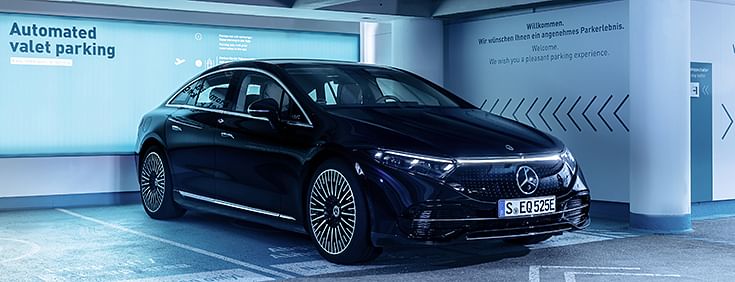Bosch’s automated vehicle maneuvering helps optimise production
Driverless maneuvering service, based on Bosch’s automated valet parking system, can be used in a wide range of applications both inside and outside the manufacturing shop and helps improve plant safety.
Getting vehicles from the assembly line to the test bench without a driver will soon be a realistic alternative. According to Bosch, its automated vehicle maneuvering solution significantly optimises automotive production processes while also increasing safety.
Automakers can finally get to grips with challenges such as the tight maneuvering of vehicles on the shopfloor, downtimes in production due to absent drivers, accidents or damage caused by collisions, and a lack of information on where vehicles are located in the plant.
Based on its automated valet parking system, Bosch equips the automaker’s plant with a lidar-sensor infrastructure, which it supplements, where required, with Bosch stereo cameras. The information generated by the sensors is fed into edge computers, and smart algorithms tell the vehicle which route to take. In this way, Bosch states that it makes it possible for vehicles to maneuvre without drivers – even where space is tight. Smart technology installed in the plant keeps the technical requirements in the vehicle itself to a minimum.
“Automated vehicle maneuvering stems from the systematic work we have done to continuously improve automated valet parking. This driverless maneuvering service is a further key component of automated mobility. Our solution is designed to offer automakers a new level of efficiency and to help them address challenges such as the shortage of skilled production workers,” says Claudia Barthle, head of sales for software and services in the Cross-Domain Computing Solutions division at Bosch. “Based on feedback from our customers, we identified an urgent need for a solution that would enable automated vehicle maneuvering both inside and outside the manufacturing shop. Now our portfolio features a system that meets precisely those requirements.” Bosch is in talks with various automakers regarding the installation of automated vehicle maneuvering in their plants.
Multiple benefits
The driverless maneuvering service can be used in a wide range of applications both inside and outside the manufacturing shop. For example, once a new vehicle has successfully completed first ignition, the system can maneuvre it from the assembly line to the next stage in the process. This enables vehicles to be moved without a driver or any other human interaction, for example from one test bench to the next.
The automated vehicle maneuvering system can also comfortably maneuvre vehicles through calibration lines while maintaining a constant speed. Should a manufacturing error be detected, the smart solution will also automatically drive the vehicle to the plant’s repair shop. Once a car has reached the end of the assembly line, it drives out of the factory and into the logistics parking area, ready for its onward journey. But that’s not all.
In the future, the new Bosch solution will also enable vehicles to be maneuvered between free parking spaces and charge spots, enabling them to be automatically recharged overnight, for example. The benefits are clear: the driverless maneuvering service saves automakers not just time, but also money – the technology eliminates the need for associates to drive the cars from one stage of the process to the next. This increases efficiency while reducing downtime and costs, enabling automakers to significantly optimize their shop-floor processes and workflows and make them more efficient. Automated vehicle maneuvering also offers other advantages, such as improved safety on the factory floor. Lidar sensors scan the environment, identify the driving aisle, and reliably detect obstacles or people that are in the vehicle’s path. If an unexpected obstacle is detected, the vehicle brakes and safely comes to a complete stop. Only once the route is clear does it continue on its way.

Last year, the world’s first fully automated driverless (SAE Level 4) parking function was given official approval for regular use in Germany. Drivers simply park their car in a drop-off area and leave it up to Bosch’s intelligent parking garage infrastructure and the technology installed in the vehicle to work together to find a free parking space and maneuvre the car into it. Automated vehicle maneuvering employs the same principle.
RELATED ARTICLES
BMW Group to use natural fibre composites in its future models
Following several years of development and in-depth research, the BMW Group has reached series maturity of natural fibre...
Nissan reinvents Leaf as a sleek electric SUV with 600km range
First launched as a hatchback in 2010, the third-generation Leaf is unrecognisable compared with its predecessors. The n...
Volvo Cars signs recycled steel supply pact with SSAB
The recycled steel will be used in selected components of the forthcoming, fully electric EX60 SUV, as well as other car...





 By Autocar Professional Bureau
By Autocar Professional Bureau
 19 May 2023
19 May 2023
 3595 Views
3595 Views








